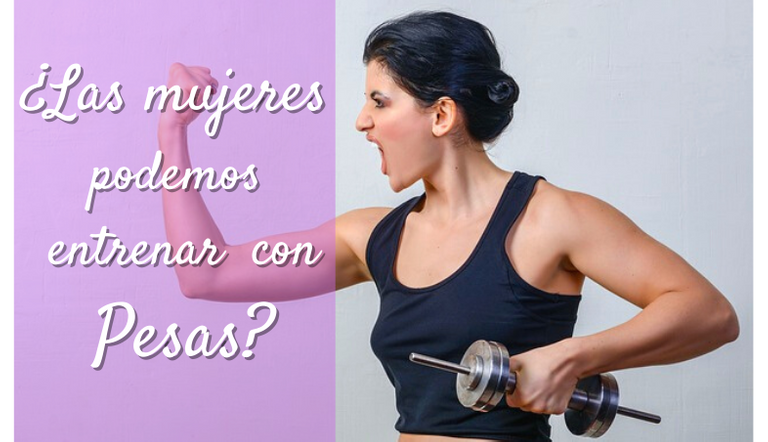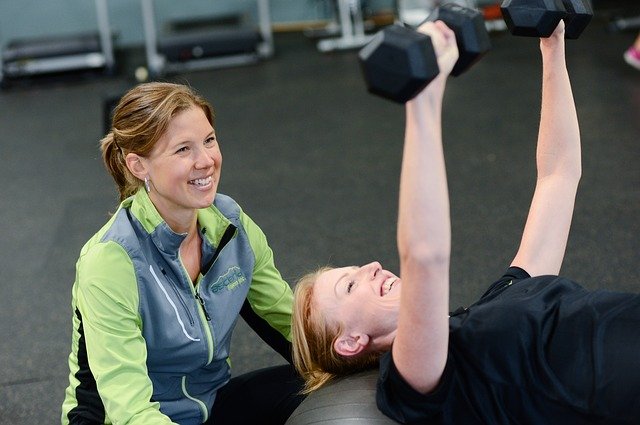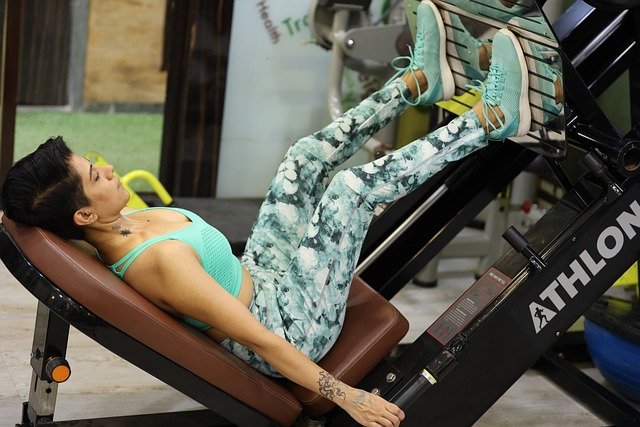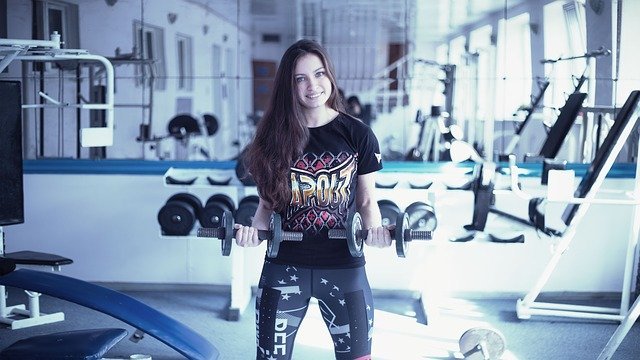¿Las mujeres podemos entrenar con pesas?/ Can women train with weights? [ESP/ENG]
Esta es una pregunta que siempre escucho en los gimnasios, incluso se consulta mucho a los "entrenadores" en redes sociales.
It is a question that I always hear in gyms, even "trainers" are consulted frequently on social networks.

Fuente / Source

Culturalmente la sociedad ha vendido para nosotras las mujeres la idea de una figura estilizada, con brazos y piernas delgadas, firmes pero no voluminosas y es aquí donde radica el miedo de muchas mujeres a atreverse a entrenar con pesas.
Lo primero que debemos establecernos a la hora de entrenar con pesas es el objetivo que nos hemos planteado, por tanto entrenar con pesas puede tener como meta aumentar la masa muscular (hipertrofia) o aumentar la resistencia muscular.
Por lo general, nosotras las mujeres buscamos resistencia muscular para lograr brazos, piernas y espalda tonificados. Por tanto se debe empezar con cargas bajas distribuyendo la actividad física en series cortas (3-4) con un rango de repeticiones entre 8-12. Podemos iniciar con mancuernas de 1 kilo y en la medida que percibamos que no hay fatiga muscular en las repeticiones de la última serie, será el momento propicio para aumentar el peso con el cual trabajar.
Lejos de lo que se piensa, las mujeres estamos obligadas a realizar ejercicios con cargas en especial en la edad peri menopáusica ya que este período es donde empiezan a disminuir las hormonas ováricas con la pérdida de masa ósea.
Culturally, society has sold us women, the idea of a slim figure, with slender arms and legs, firm but not bulky, and this is where the fear of many women to dare to train with weights lies.
The first thing we must establish when training with weights is the objective we have set ourselves, therefore training with weights can have as a goal to increase muscle mass (hypertrophy) or increase muscular endurance.
Generally, we women seek muscular endurance to achieve toned arms, legs, and back. Therefore, we should start with low loads distributing the physical activity in short series (3-4) with a range of repetitions between 8-12. We can start with 2 lbs dumbbells, and as long as we perceive that there is no muscle fatigue in the repetitions of the last series, it will be the right time to increase the weight with which to work.
Contrary to popular belief, women are obliged to perform exercises with weights, especially in the peri-menopausal age, since this is the period when ovarian hormones begin to decrease with the loss of bone mass.

Fuente/Source

Pues hay estudios que han demostrado que al realizar ejercicios con cargas involucran una serie de movimientos locomotores que implican músculos y articulaciones. Estos movimientos del tipo palanca son los que realizan nuestros brazos cuando extendemos y flexionamos siendo el centro de rotación nuestros codos. También en el caso de extender los brazos alejándolos de nuestro eje central, es un movimiento tipo palanca con su centro de rotación en nuestros hombros. Lo mismo ocurre con el tren inferior (piernas) con los movimientos que involucran el centro de rotación las rodillas o la cadera.
En la medida que entrenamos con carga, el hueso que hace palanca sufre un engrosamiento, esto quiere decir que estimula a que los osteocitos (células óseas) formen hueso rico en Calcio, lo cual lo hace fuerte y resistente retrasando la osteoporosis. Por ejemplo, al ejercitar nuestros bíceps con mancuernas, extendiendo y contrayendo, estaremos fortaleciendo el hueso húmero. En el caso de hacer banca para las piernas, si la carga a levantar es por debajo de las rodillas estaremos fortaleciendo el fémur, un punto crítico para evitar un futuro desgaste de cadera.
As we train with load, the bone that makes leverage undergoes a thickening, this means that it stimulates the osteocytes (bone cells) to form bone rich in calcium, which makes it strong and resistant, delaying osteoporosis. For example, by exercising our biceps with dumbbells, extending and contracting, we will be strengthening the humerus bone. In the case of bench presses for the legs, if the load to be lifted is below the knees, we will be strengthening the femur, a critical point to avoid future hip wear.

Fuente/Source


Fuente/Source

Si te gustó este artículo o tienes una información adicional puedes compartirla al final de mi publicación y así podemos intercambiar opiniones.
¡Nos vemos en una próxima oportunidad!
If you liked this article or have additional information, you can share it at the end of my post and exchange opinions.
Thank you very much for reading.
See you next time!

Electronic-terrorism, voice to skull and neuro monitoring on Hive and Steem. You can ignore this, but your going to wish you didnt soon. This is happening whether you believe it or not. https://ecency.com/fyrstikken/@fairandbalanced/i-am-the-only-motherfucker-on-the-internet-pointing-to-a-direct-source-for-voice-to-skull-electronic-terrorism
La comunidad es hispanohablante, tal como lo indica el panel del interfaz principal:
El lugar del idioma español en la publicación debe ser el preferencial (columna izquierda).
Gracias por comprender y una vez que esto sea corregido, su publicación será desmuteada.
Esperamos su comprensión.
Buenas tardes comunidad @fulldeportes, muchas gracias por la observación. Ya la información en español está en la columna izquierda. Espero haber solventado este aspecto en mi publicación y pueda ser desmuteada. Saludos.
La publicación ha sido desmuteada.
Gracias por comprender.
No al contrario gracias por recordarnos las reglas 😃
https://twitter.com/chaodietas/status/1440716153903403012
The rewards earned on this comment will go directly to the person sharing the post on Twitter as long as they are registered with @poshtoken. Sign up at https://hiveposh.com.
Buen trabajo sería fabuloso verte en movimiento con esas pesas. Saludos
Muchas gracias @omarcitorojas, pronto!